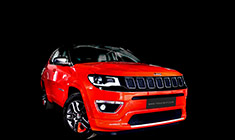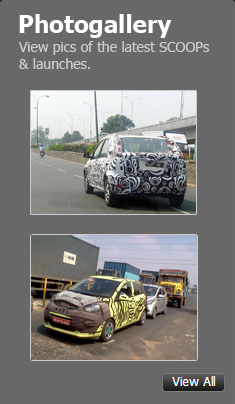News
Hyundai IONIQ 5 EV : My impressions & observations after a 7 hour drive
The overall efficiency felt mind-blowing and a step above last-gen EVs such as the BMW i3 and Mitsubishi iMIEV which I drive on an almost daily basis as part of my job at the university here.
BHPian rshnvjy recently shared this with other enthusiasts.
Where and how?
Singapore being the land scarce country it is, has a limited length of roads and expressways. Because of this, the Singapore government restricts the registration of new vehicles by implementing an auction-style Certificate of Entitlement (COE) system. You cannot buy a car unless you successfully bid and obtain a COE first. I am a young electronics engineer who has been working here since 2018 I certainly cannot afford a car here. However, being a car enthusiast and an ardent reader of TeamBHP, I keep my interest sharp by following the latest developments in the Indian automotive scene and by jumping at the first opportunity to drive any new car which comes to Singapore’s shores.
Car sharing (short term rentals) here is a burgeoning business with many competing players aiming to capture the market of users who cannot afford to buy a car outright but would still like the convenience. No matter how much the Singapore government promotes public transport, there are still numerous advantages to using a car here. GetGo is one of the newer fledgeling but rapidly growing players in this market. They currently have over 1700 cars in over 1300 locations island wide and they offer hourly rentals on the Point-A-to-Point-A model. One has to book and return the car to the same public parking lot. Booking is done via an app. The app also acts as the vehicle key and allows you to lock/unlock the car. All the cars have push-button start. Most of these cars are economy sedans and hatchbacks such as the Mazda 3, Hyundai Avante and Ssyangyong Tivoli. Recently however, they signed an MOU with Hyundai to deploy a number of their new IONIQ 5s as the flagship of their range. Currently there is only one and it was located quite close to my house which led me to try it out.
While typical compact vehicles as named above are priced at around S$9/hour and S$0.39/km (fuel is free, only the driven mileage is charged), the IONIQ 5 is priced at exactly double for the time charge (S$18/hour) but significantly cheaper for the mileage charge (S$0.25/km) since it is electric. The model used is the base model RWD with the regular 55 kWh battery which promises around 320+ kms of range on a full charge.
Some background about the car:
The IONIQ 5 (henceforth referred to interchangeable as the I5 / IONIQ / IONIQ 5) is a strategically important car for Hyundai in the Singapore market, no matter however minuscule this market is. A couple of years ago, Hyundai announced that they will be setting up an Innovation Centre (HMGICS) along with an EV assembly plant right here in the west of this tiny island. This coincided somewhat with Singapore’s landmark announcement that by 2030, the authorities will no longer allow registrations of new petrol vehicles. Diesel passenger vehicles will go the way of the dinosaur even before that; 2025 onwards. Fast forward to the present day, the I5 is available in limited numbers reportedly for a price tag of around S$140,000 for the RWD long range model and around $190,000 for the AWD with the COE included. This is on a pilot Battery as a Service (BaaS) scheme from Hyundai where the battery costs are spread out over a period of 5 years. Nevertheless, these are extremely competitive prices for what is a thoroughly modern, ground-up designed EV. The next closest competitor is the Tesla Model 3 which retails for over S$200,000.
The space inside:
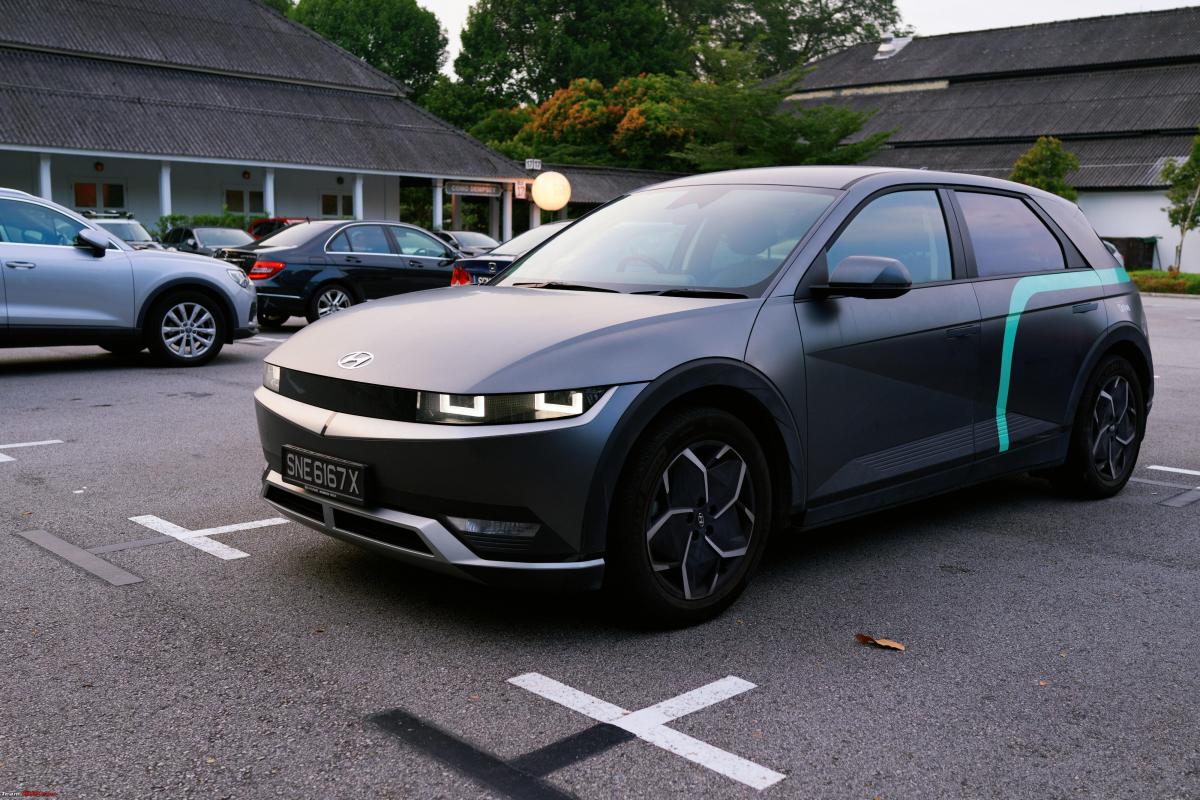
The design of this 'compact' crossover is timeless and truly a sight to behold. Never have I seen a car stand out so much (in a positive way) amongst the traffic here.
I booked the IONIQ for a 7 hour drive from 1pm to return back the car at 8pm. The car was parked at an open air car park which is a little bit away from my home. I had to take the train and bus for a journey totalling 20 minutes to get there. Upon reaching, unlocking the car was easy with the GetGo app. The door handles popped out and the first thing that struck me was the sheer amount of space in the cabin. The EV-first architecture really has its benefits and I am yet to see a conventional vehicle that can claim to be this roomy inside. I am 189 cm tall and most ‘compact’ vehicles feel tiny to me. Not the I5. This could also be attributed to the fact that this car is actually not as compact as its proportions would suggest. At over 4.6m long, it is almost the length of our Tata Hexa back in India and it has an even longer wheelbase at 3m. All of this results in an interior that feels appropriately roomy for taller occupants and incredibly spacious for shorter ones. The cabin is also extra wide and there is plenty of space for both the driver and passenger to rest their arms on the centre armrest without having to complain to each other.
There are plenty of storage spaces, a cavernous glove ‘drawer’ which can swallow entire bags and large cupholders. Being RWD only, there is also a sizeable frunk which can hold your weekly essential groceries if the need arises.
The rear seat is supremely comfortable and easily gives 3 to 4 inches of legroom even with the driver’s seat adjusted for my 6’2” height.
The front has extremely supportive chairs with a healthy amount of travel. The entire floor across the front and rear are flat and add to the ambience of space.
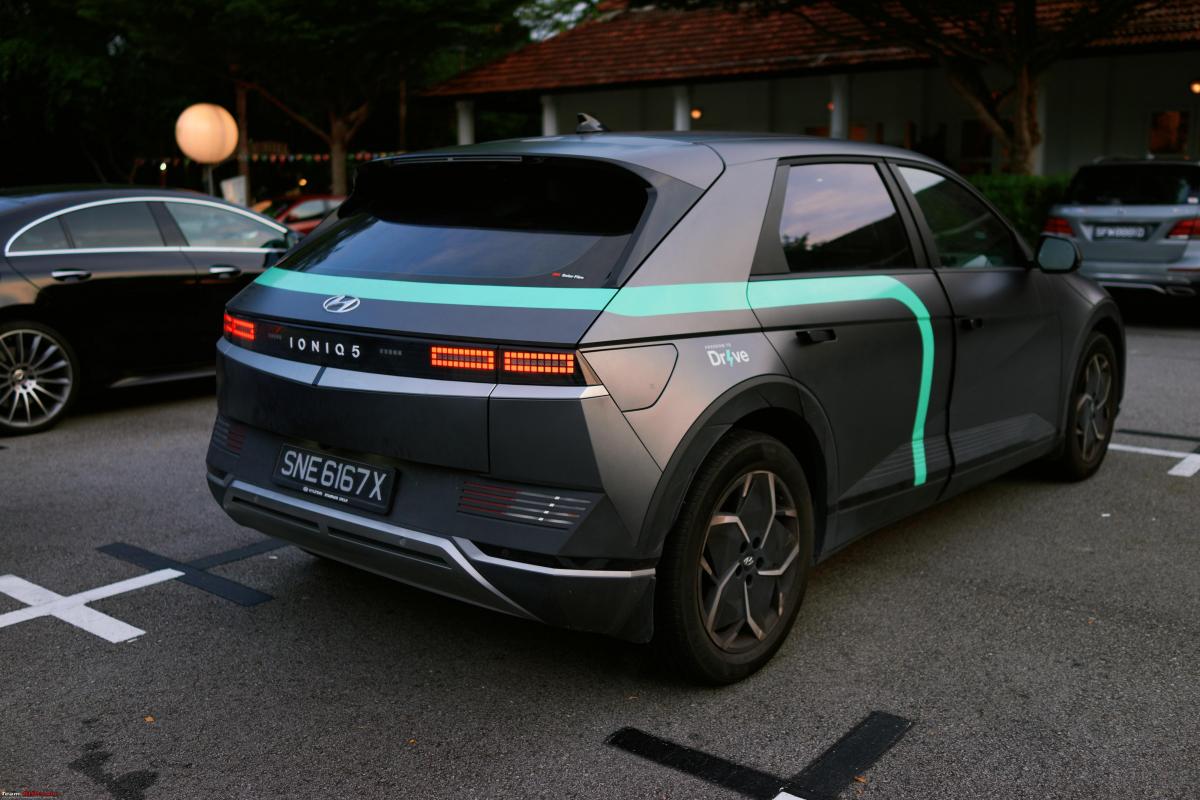
The rear with the pixel tail lamp motif is unique and the overall shape reminds one of a Lancia Delta. Nothing wrong in that!
Equipment:
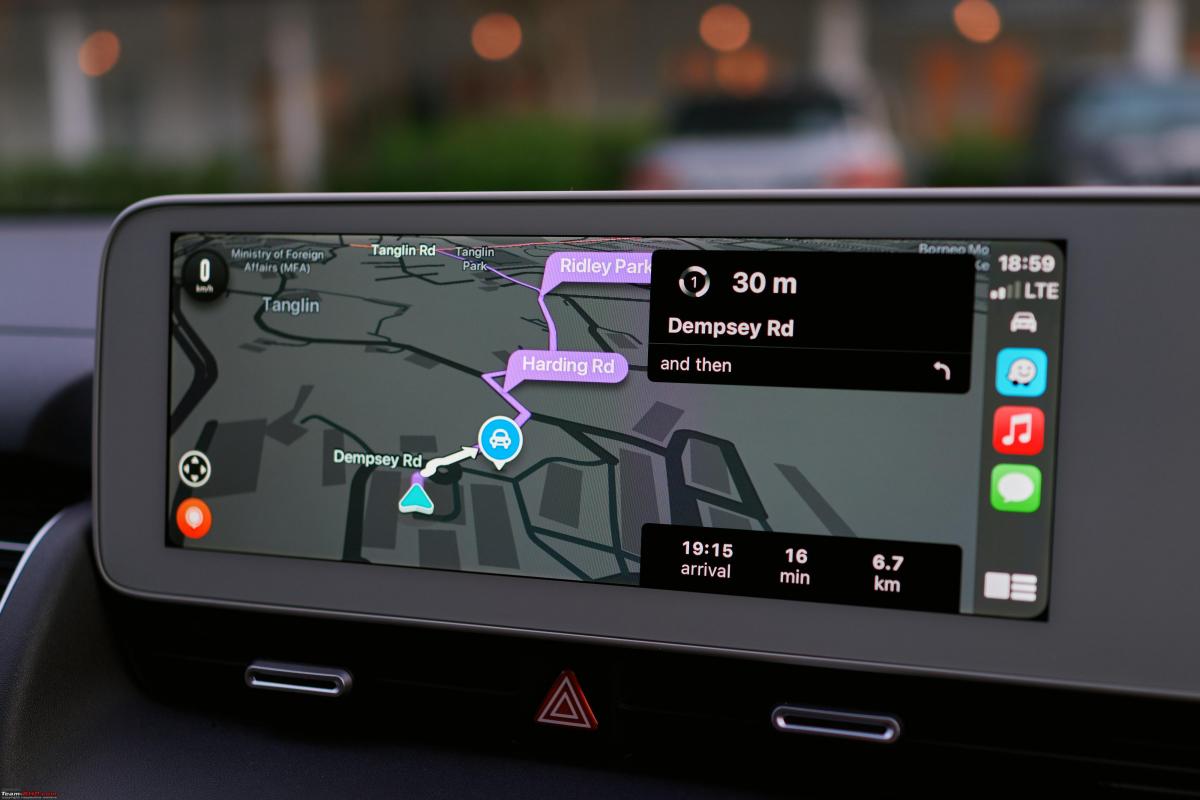
Apple CarPlay running Waze on the main infotainment display.
This was the base model with not much in the way of frills. No 360º camera, no ventilated or heated seats, no HUD or any of the other fancy features which come as standard on the higher end models. However it was quite well equipped as far as base models go with wired Apple CarPlay/Android Auto, wireless charging for your phone, powered driver’s seat, dual zone climate control, a full ADAS suite and a few other gizmos. CarPlay was a godsend since it allowed me to maximise the duration of the booking by enabling efficient navigation using Waze.
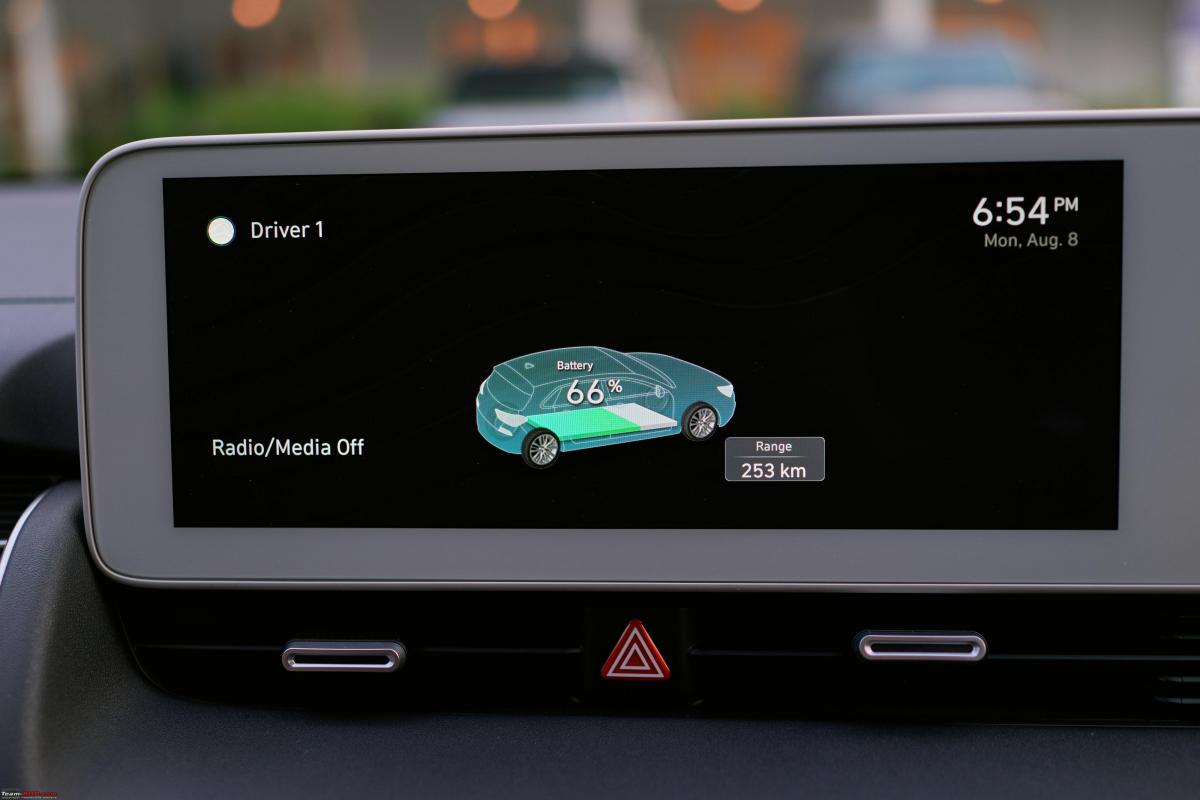
The infotainment screen in 'sleep' mode showing some basic information such as the current state of charge.
The second thing that struck me after the space inside was how hot it was after being parked in the scorching midday sun while wearing a coat of matte dark grey paint. Every touch surface was boiling hot to the touch and it didn’t become cooler for at least 10 to 15 minutes after we had moved off. The AC did its job well but it was just that hot on that day.
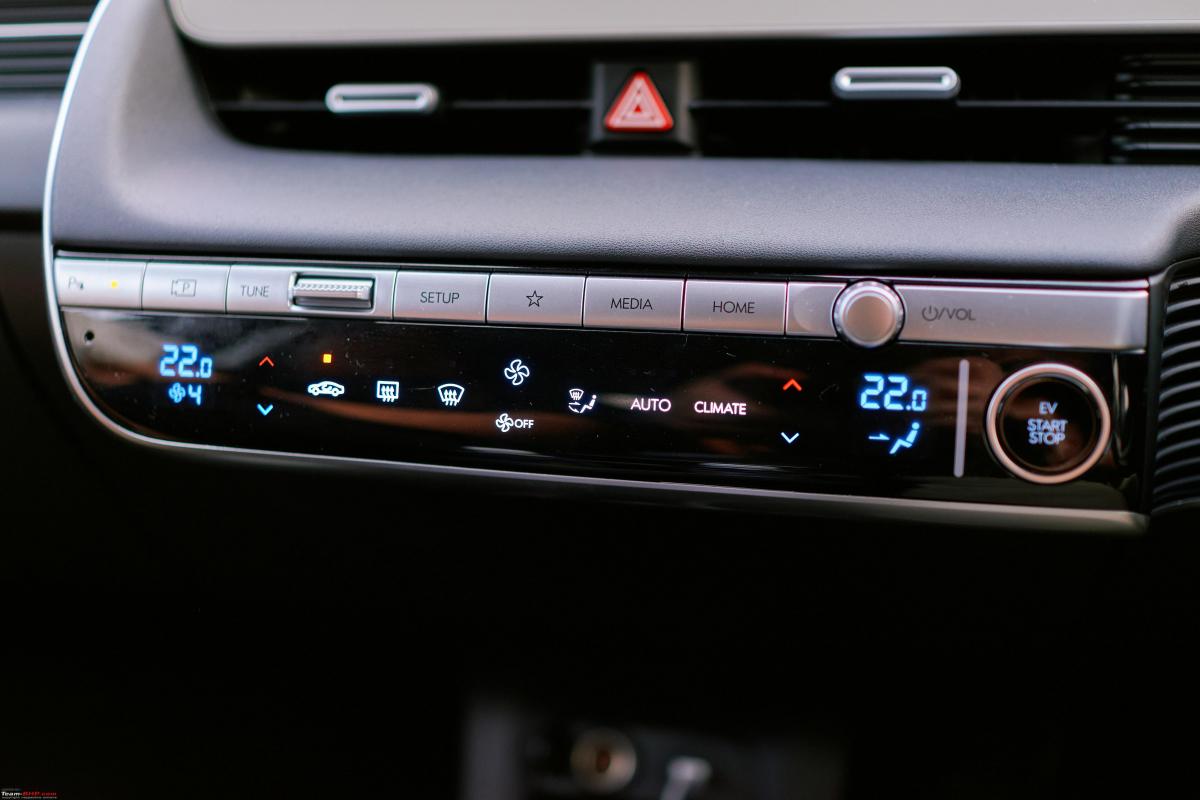
The climate controls. Touch sensitive buttons are sometimes annoying but once you get used to their position, it is fairly easy to operate them with your eyes on the road.
The drive:
The gear selector lives on its own stalk below the wiper stalk to the right of the steering column. Twisting the knob to ‘D’, the park brake disengages and you are ready to go. The car creeps forward at 5 to 7km/h simulating a typical automatic gearbox unless the ‘Auto-hold’ function is enabled. Driving around in tight parking spaces is effortless and it is very easy to place the car exactly where you want to. The driving position is quite tall with a higher H-point. Personally, this is something I prefer because it means that I don’t have to bend down as much to sit inside. Visibility all-round is excellent and the pillars don’t take up too much of your vision. The mirrors are perfectly sized and the IRVM gets an auto-dim function.
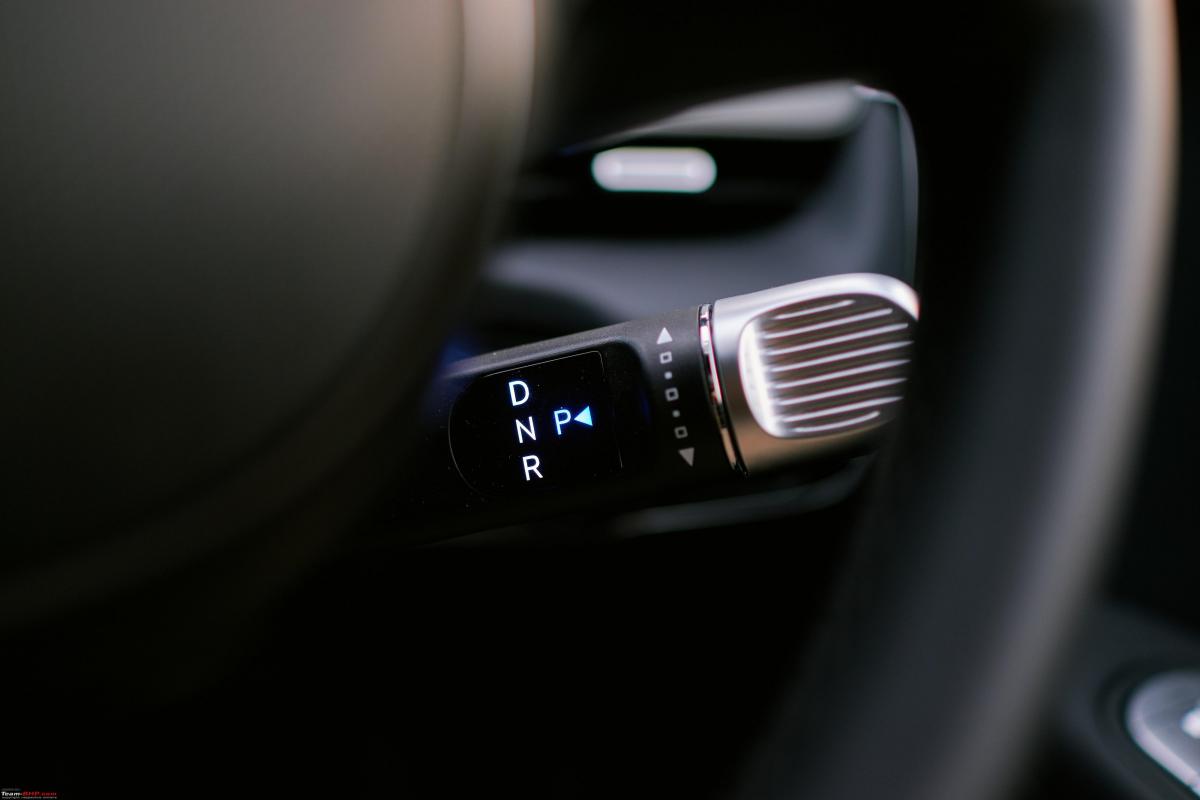
The gear selector stalk.
The throttle response is perfectly judged and is not too sensitive. The car comes with switchable modes for the drive train: Eco, Normal and Sport. Normal is quite sedate, Sport is sharp and over-enthusiastic and Eco is lazy but urgent when you need it to be. I felt that in Singapore’s urban traffic conditions, even Eco felt adequate (and perhaps even exciting compared to ICE powered cars) and I was easily leaving other road users in the dust when it came to accelerating at traffic lights.
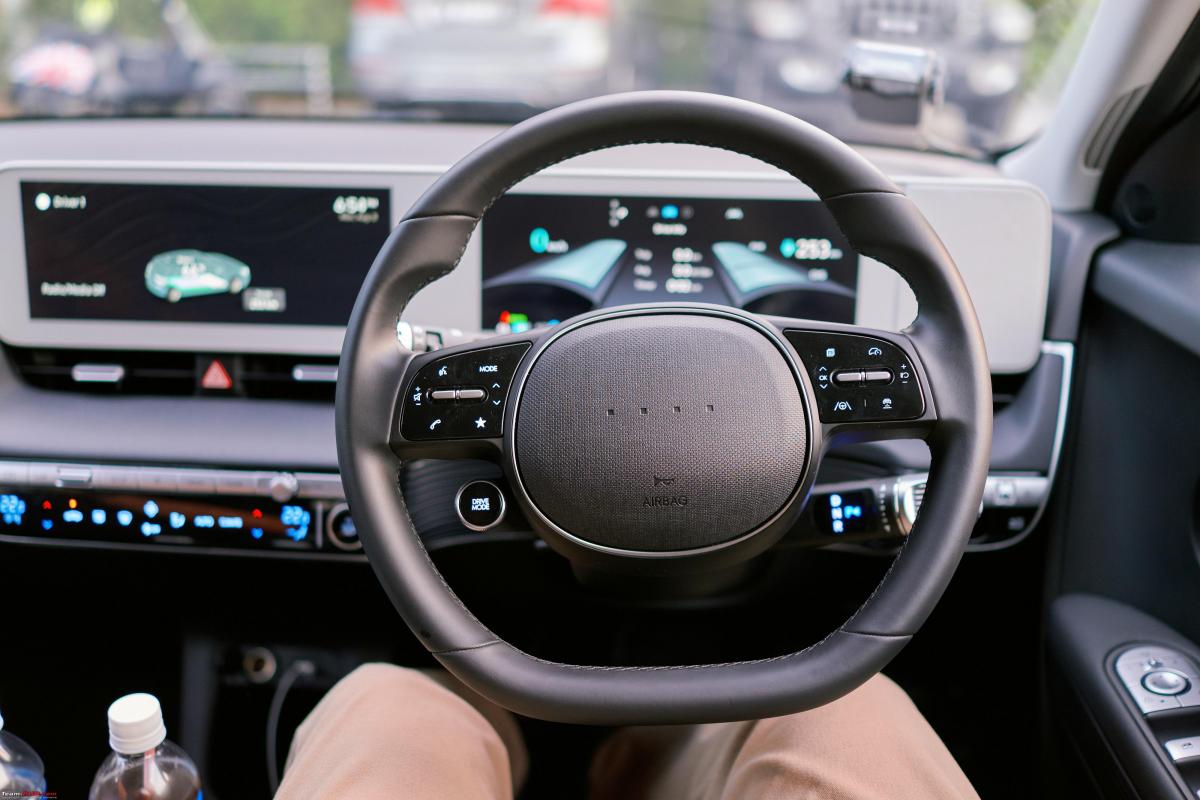
The perfectly sized steering wheel with intuitive controls on either side.
Cruising on the highway is effortless and I was touching the speed limit without even knowing. The IONIQ has a smart auto regen system which predicts the level of braking I am about to apply and adjusts the regen levels accordingly. This works by considering various factors for example, how quickly I lift my foot off the throttle. The system worked really well and I was able to get used to it within minutes.
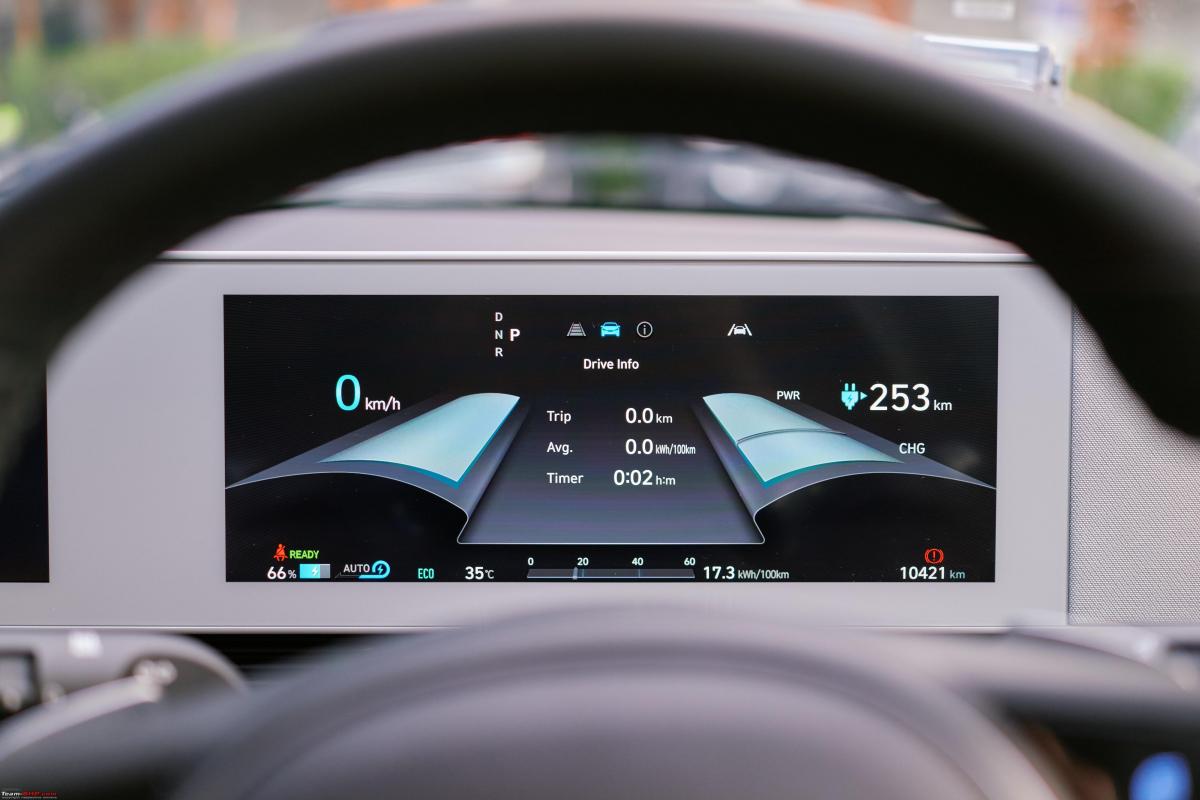
The digital instrument cluster. I loved the clutter-free, modern and minimalist design. Both the displays are super sharp with high pixel density.
The lane keep assist feature from the ADAS suite was quite annoying. It kept tugging at the steering wheel when doing an exit on the expressway (even though I had indicated earlier) because it thought that I was veering away from the markings on the road. Safe to say, I turned it off.
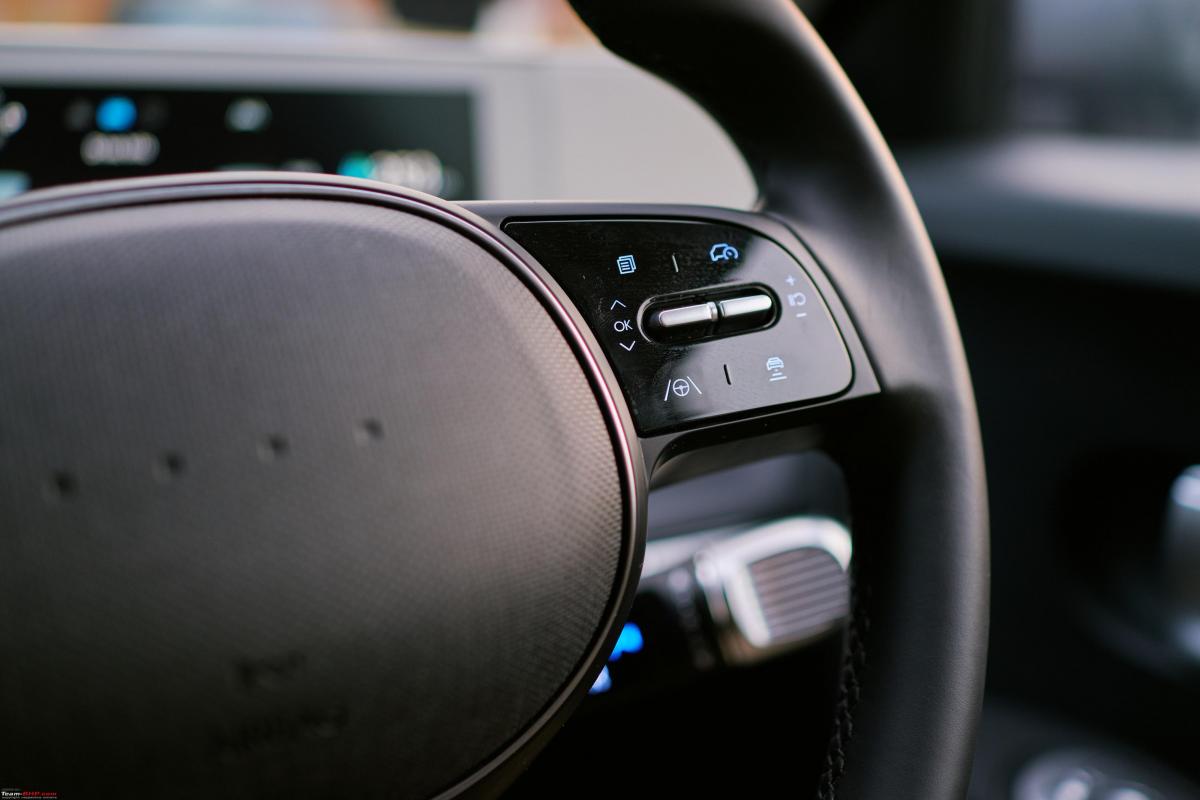
ADAS controls on the right side of the steering wheel.
Ride and handling:
The ride quality is excellent. The model I drove came equipped with 235/55/R19 wheels (coincidentally, the same size as the Hexa) on Michelin rubber. It shrugged off most undulations and bad roads with aplomb. Being Singapore, it is fairly difficult to seek out and test cars on bad roads (there are not many). However, for daily driving scenarios, the suspension and damping tuning can be termed perfectly good enough. In some occasions, such as on the expressway, it can even be considered wonderful.
Handling is inoffensive with no major flaws. The steering is perfectly weighted. It is fairly light at parking pace and weighs up proportional to the speed. It is confidence inspiring and precise with no vagueness or nervousness. I was able to drive up and down a couple of twisty sections at moderate speeds (40-60 km/h) and the car felt stable. Body roll is well controlled even though the suspension tuning is more on the softer side.
Range and battery:
In the 7 hours that I had the car, I drove a total of 77 kms. We started the trip with an indicated range of around 301 km and battery capacity of 75%. At the end of the trip, the range indicated was 252 km with a battery capacity of 61%. The overall efficiency felt mind-blowing and a step above last-gen EVs such as the BMW i3 and Mitsubishi iMIEV which I drive on an almost daily basis as part of my job at the university here.
I did not get a chance to try out the various AC and DC chargers located across Singapore during this short drive. The GetGo team reserves their electric cars for a 4 hour period during the early hours daily to top up the battery on them, hence most users may not face the issue of needing to charge the car. You can read more about Singapore’s current EV charging infrastructure here (along with information about GetGo and their services).
Conclusion:
This may not be a very comprehensive review considering that I had very little time to make observations. I kept most of my driving to the west side of Singapore and did not try the vehicle out too much along the length of Singapore’s longest expressway, the PIE. But all in all, I am completely blown away by how good of a car (let alone and electric car) the Hyundai is. It is not a small car by any means but the designers and engineers behind this project have ensured that it handles and more importantly, ‘feels’ like one. In a crowded urban environment like Singapore, or even London, San Francisco, New York (or Mumbai or Kochi), having a car this quiet, this comfortable and roomy and this easy to drive would feel like an oasis in the middle of a desert.
The IONIQ 5 has got me excited about the future of cars again and removed apprehensions about owning an EV in the future. Perhaps this is exactly why Hyundai decided to lend this car to a carsharing/rental platform, to let the general public experience its many advantages. Whichever way you put it, it is brilliant marketing!:
More photos and some miscellaneous points:
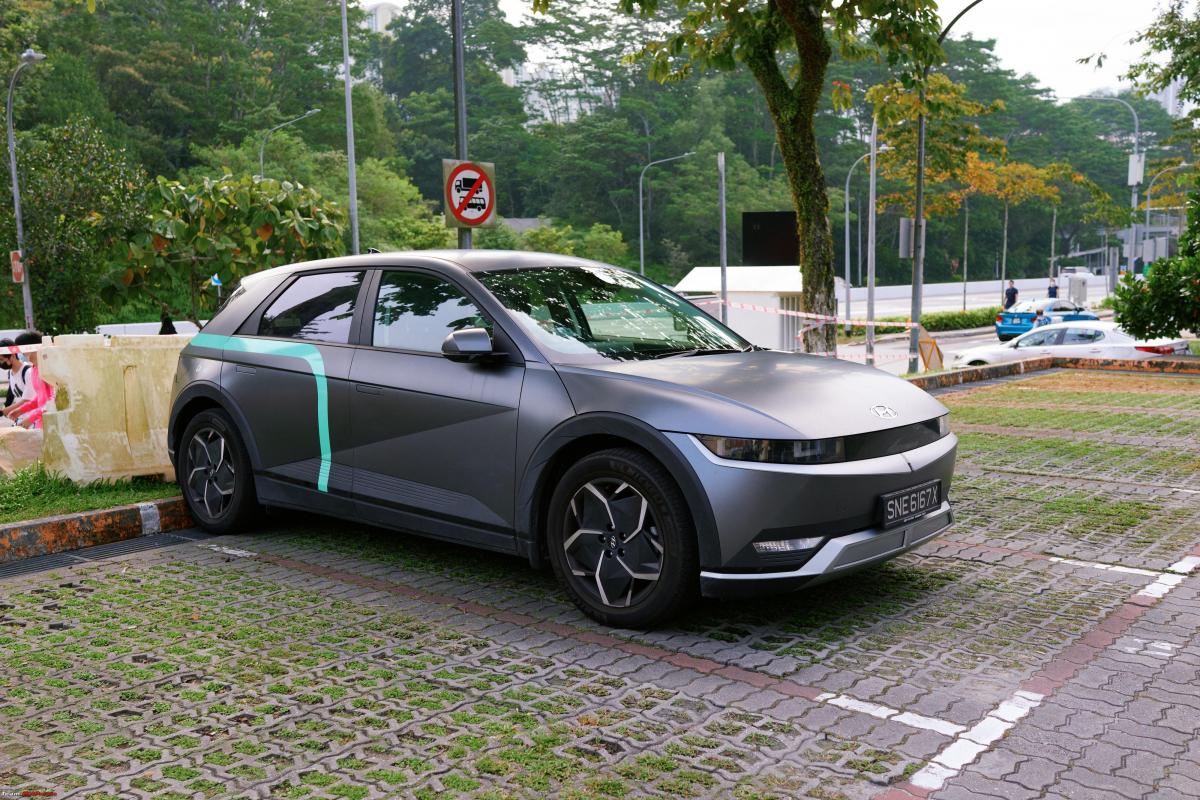
Another photo of the front three quarters. Parking in reverse was easy even without the 360 degree camera system.
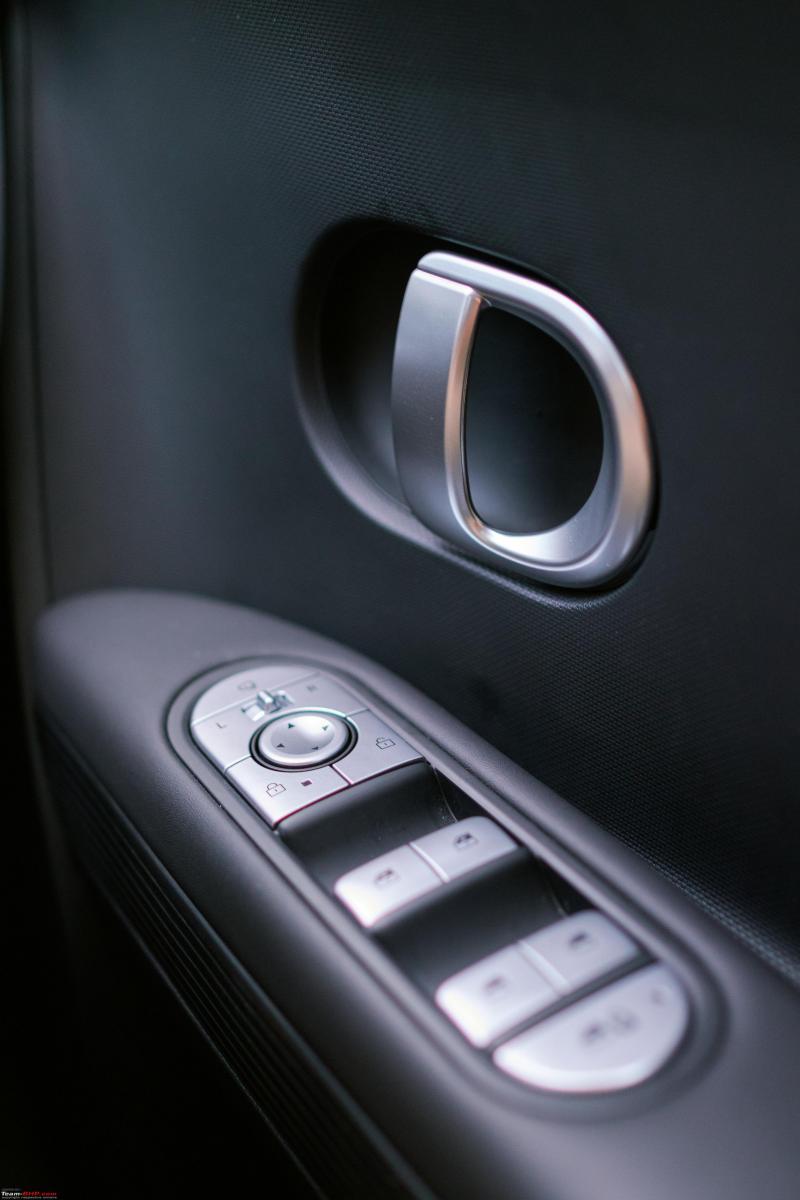
The door, window and mirror controls. Ergonomic switches with clear tactile response. Adjusting any of these is very easy even while driving.
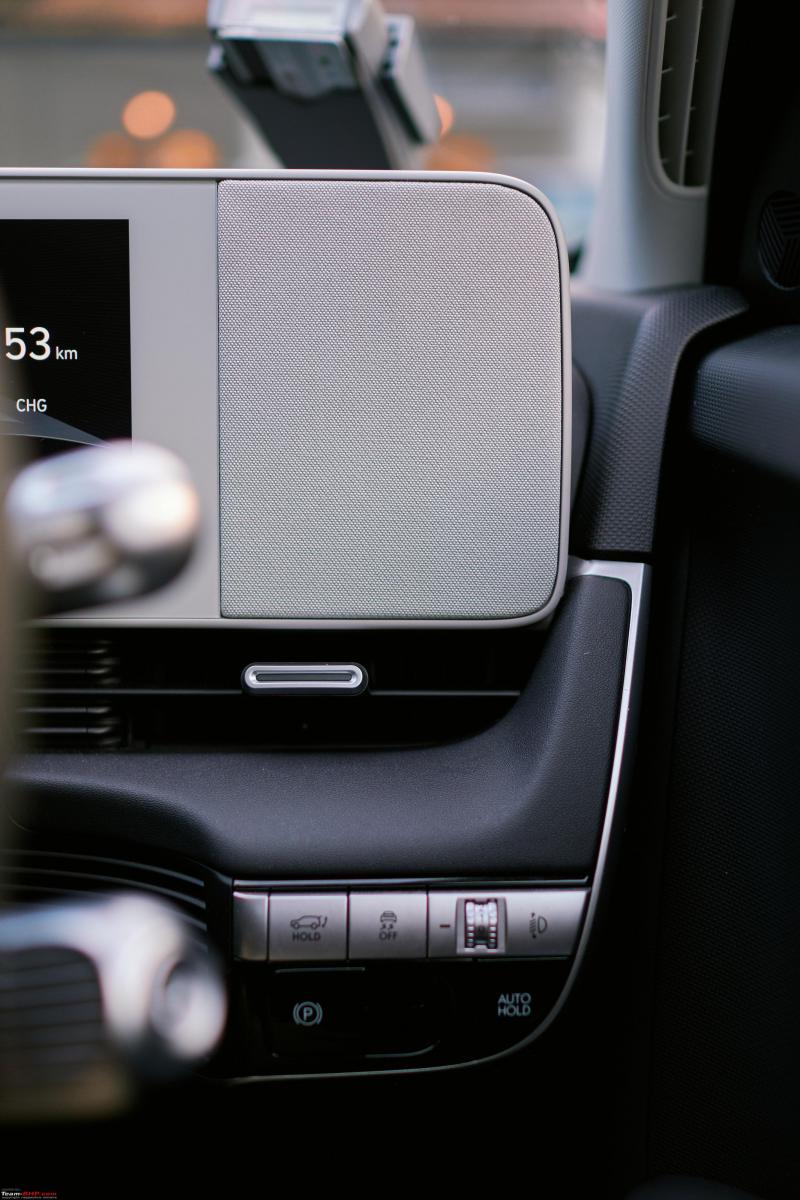
The panel covered in cloth is actually magnetic. You can stick souvenirs or fridge magnets or even Instax photos (with magnetic pins) here.
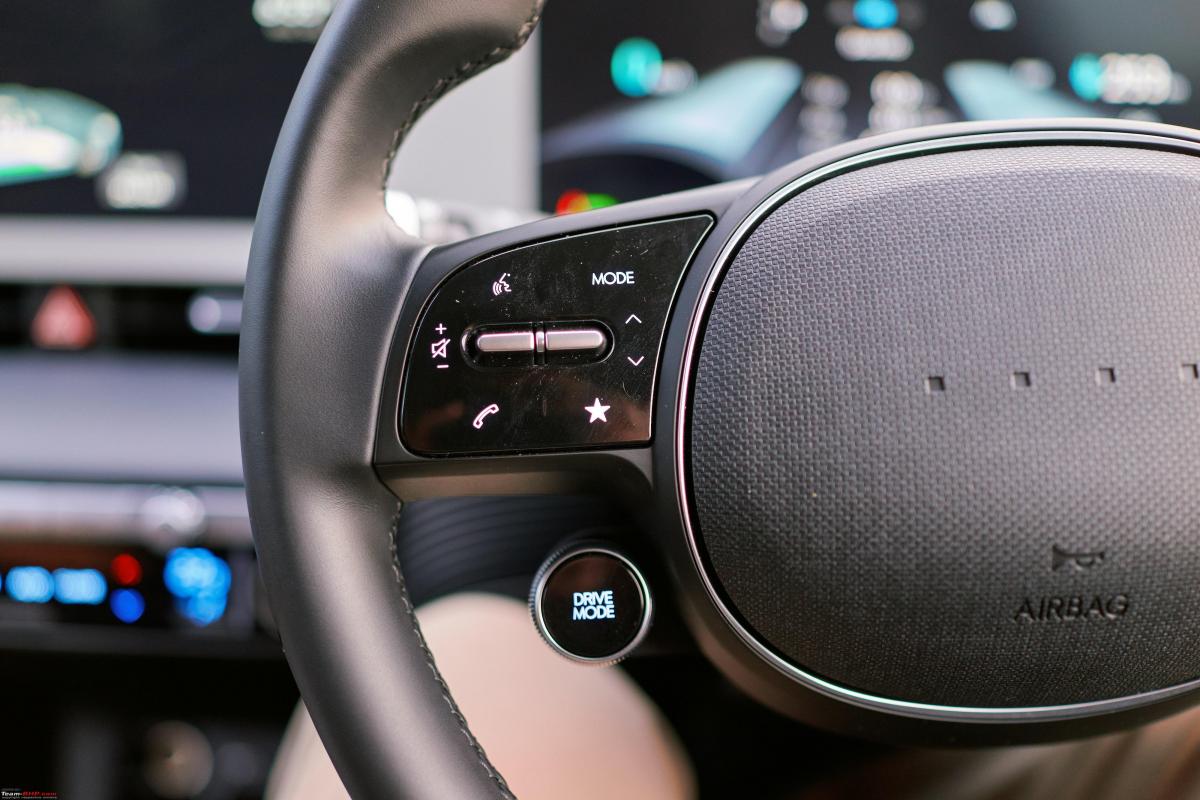
Infotainment controls.
The following photos were taken with my phone, hence may not be as high quality as the preceding ones:
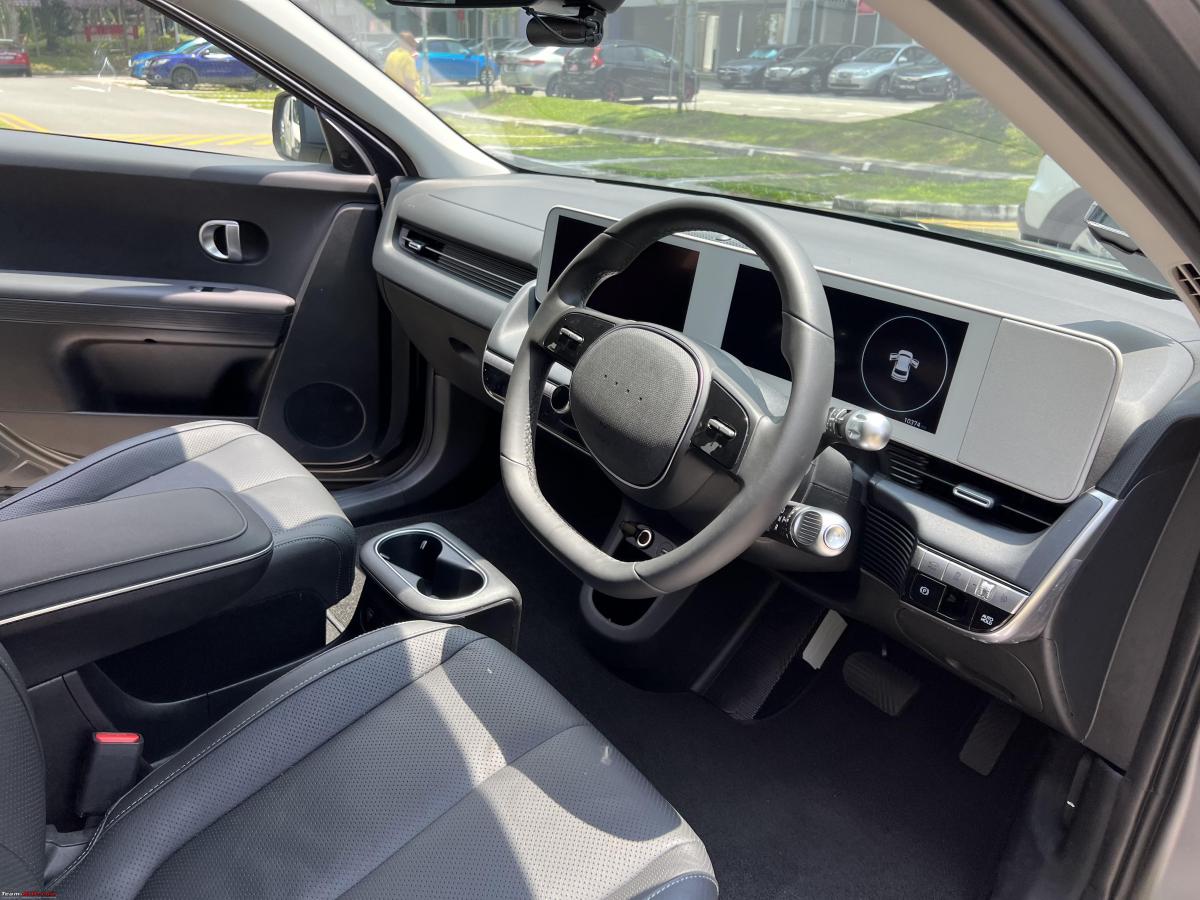
The scorching hot interiors before we started driving. The materials used are of high quality and the fit and finish is solid.
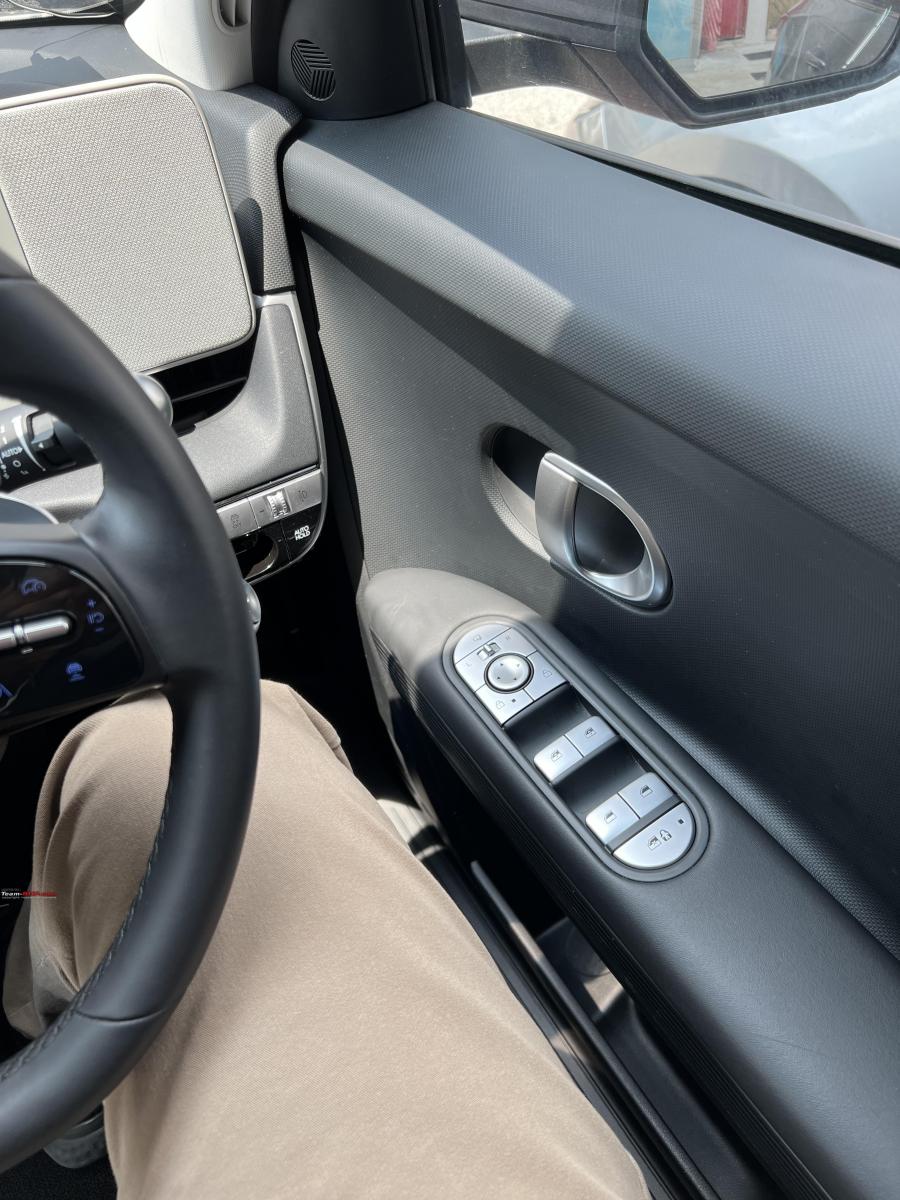
That's how much space my legs had to the door panel when seated normally. This is one spacious cabin!
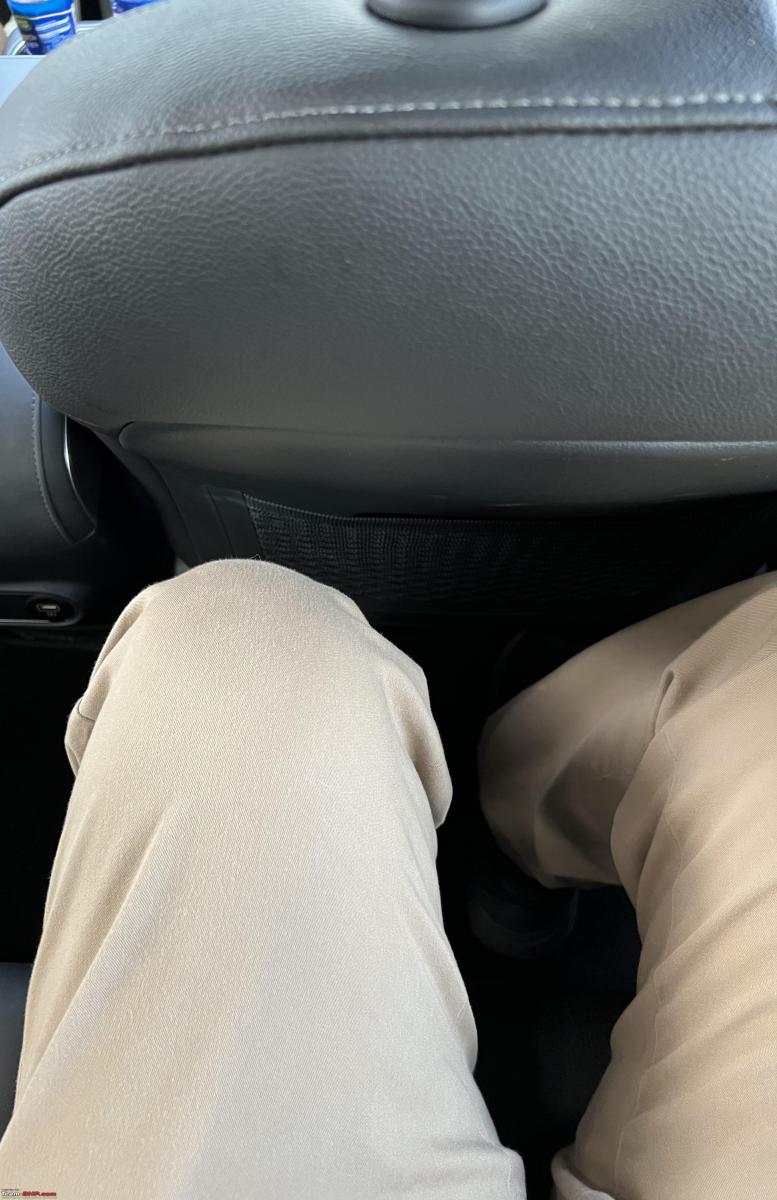
3 to 4 inches of legroom (image may be deceptive) even with the front seat set to my 6'2" position.
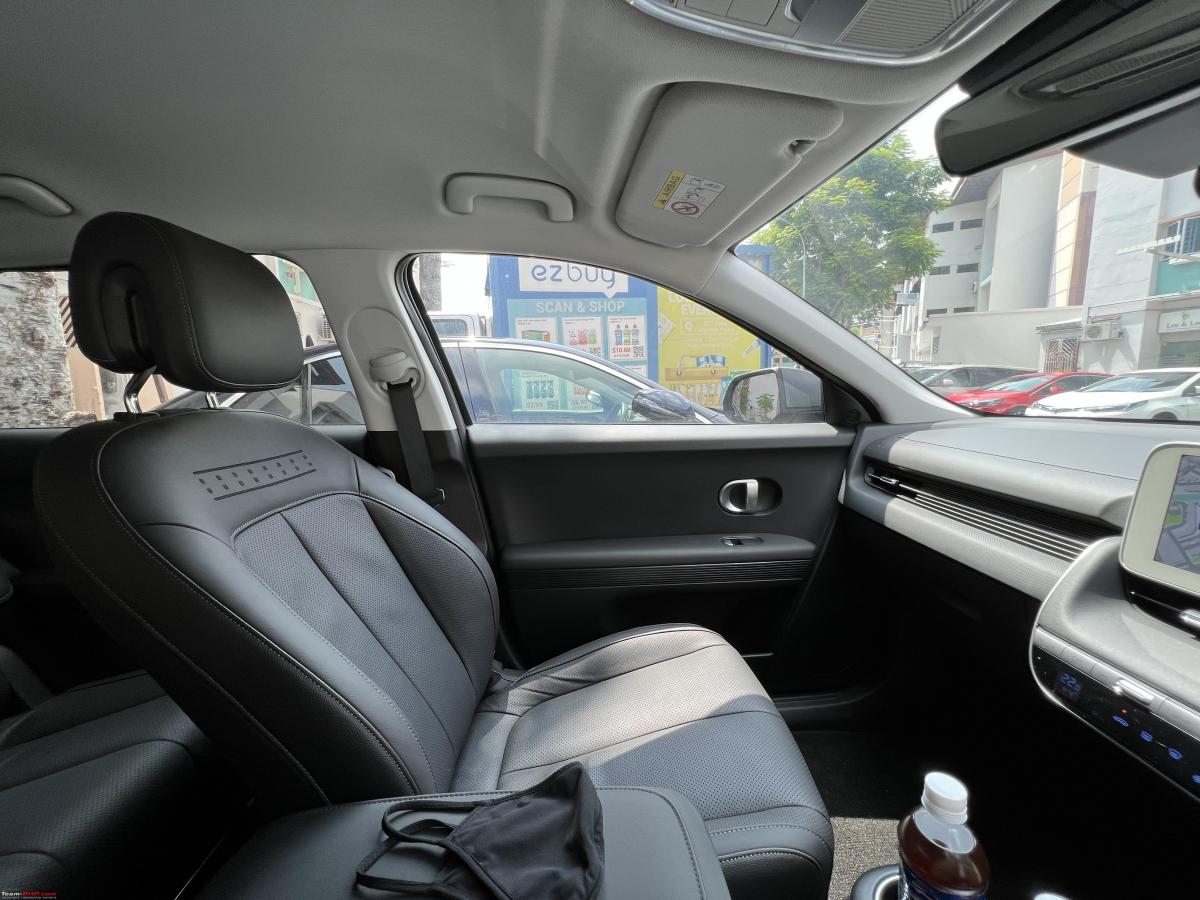
Supremely comfortable seats. My wife was very happy.
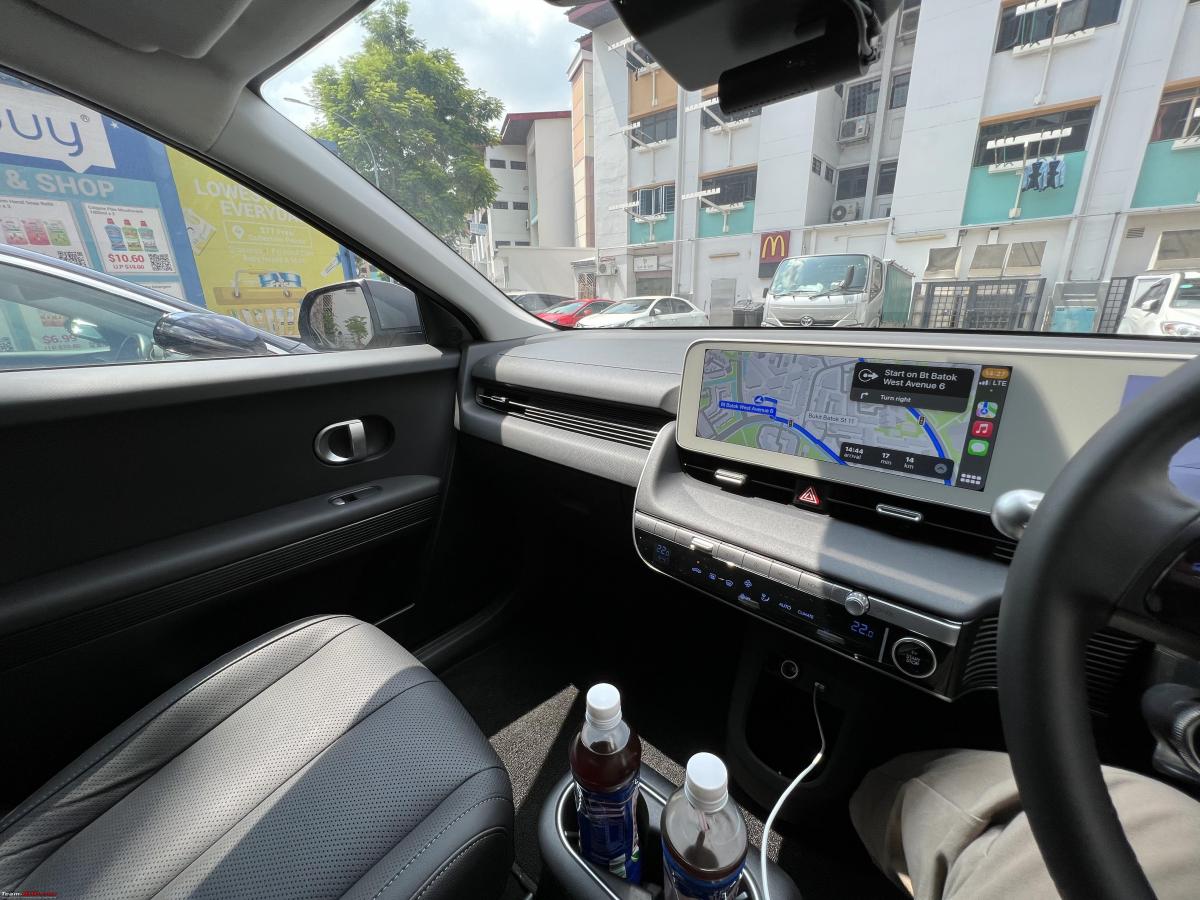
The overall dashboard design looked very simple and un-ostentatious.
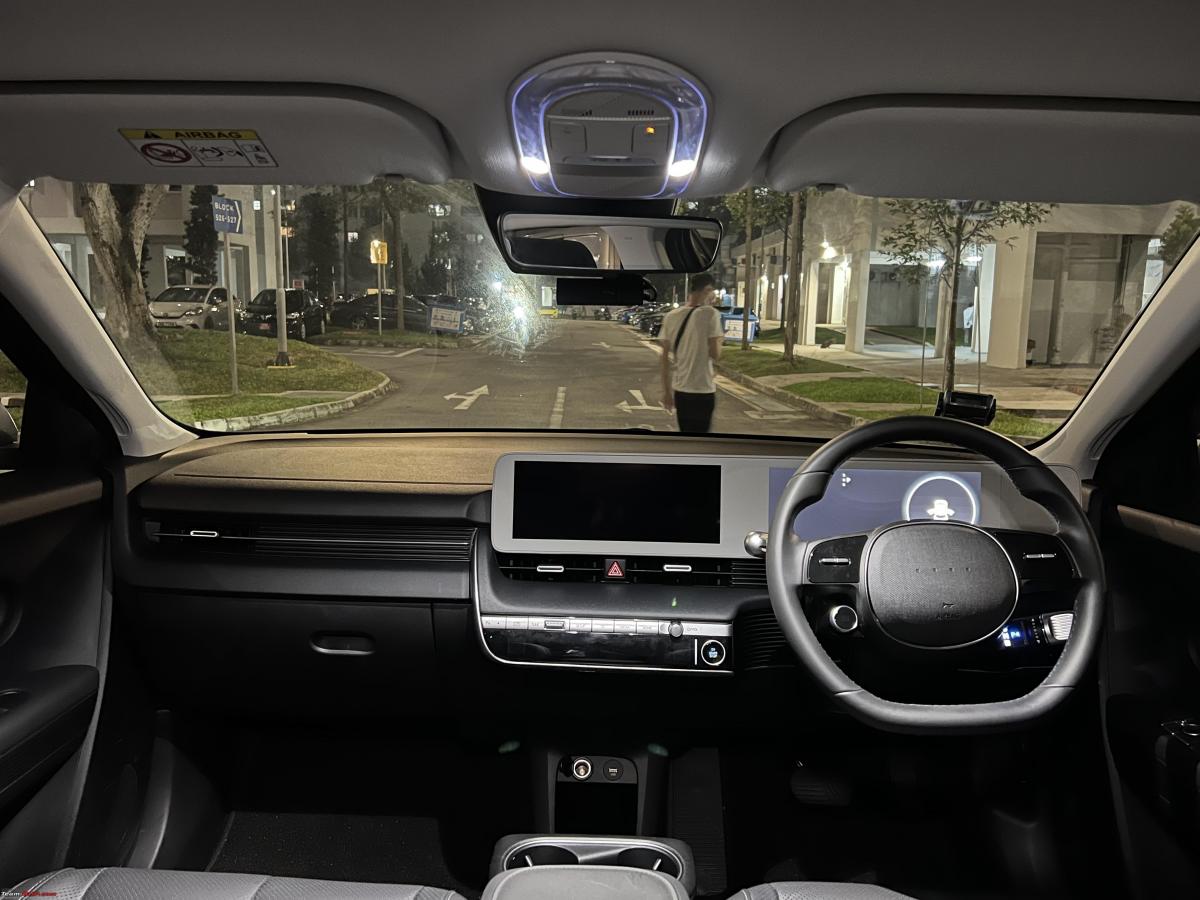
The dashboard at night. Being the base model, this did not have the ambient lighting system.
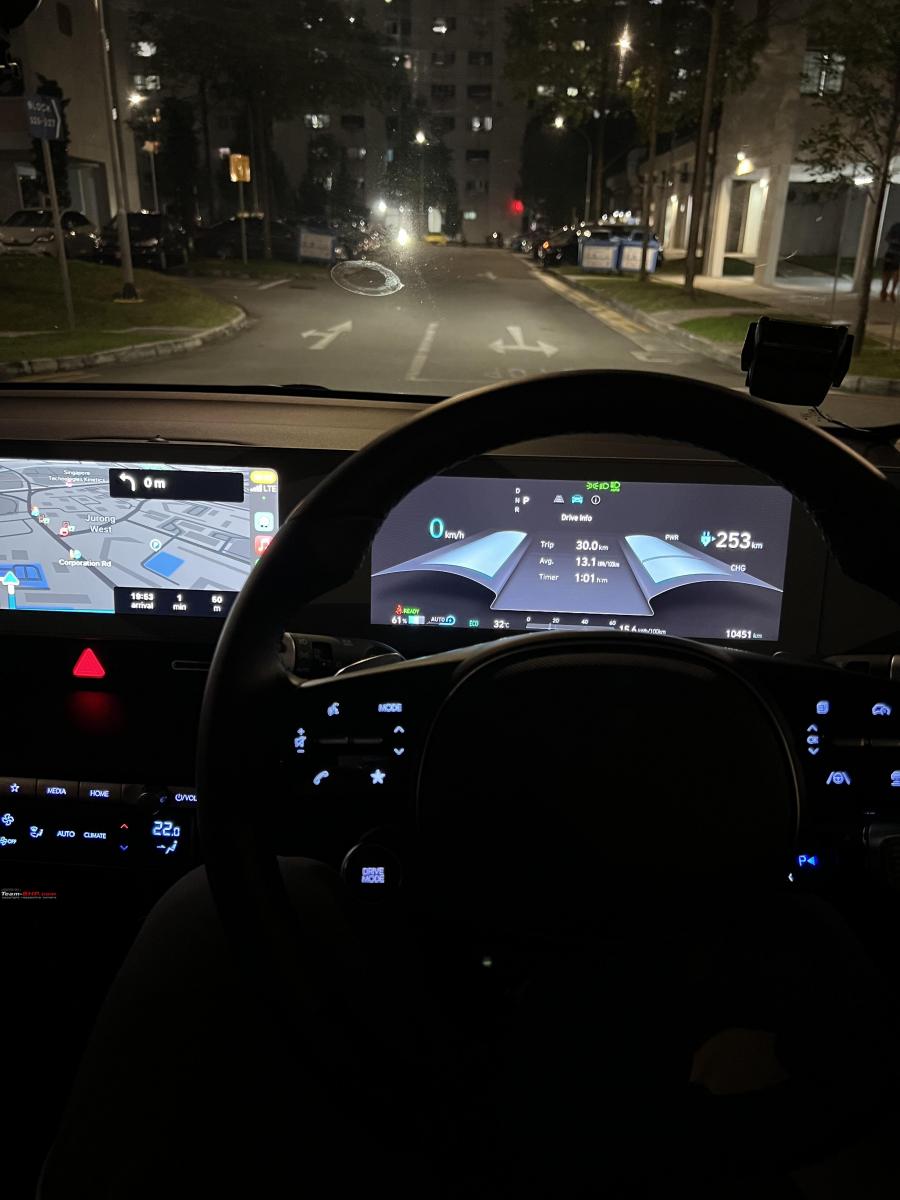
The dashboard at night. Being the base model, this did not have the ambient lighting system.a The driver's display and infotainment at night. The colour scheme can be customised to be white, black or auto switch based on time.
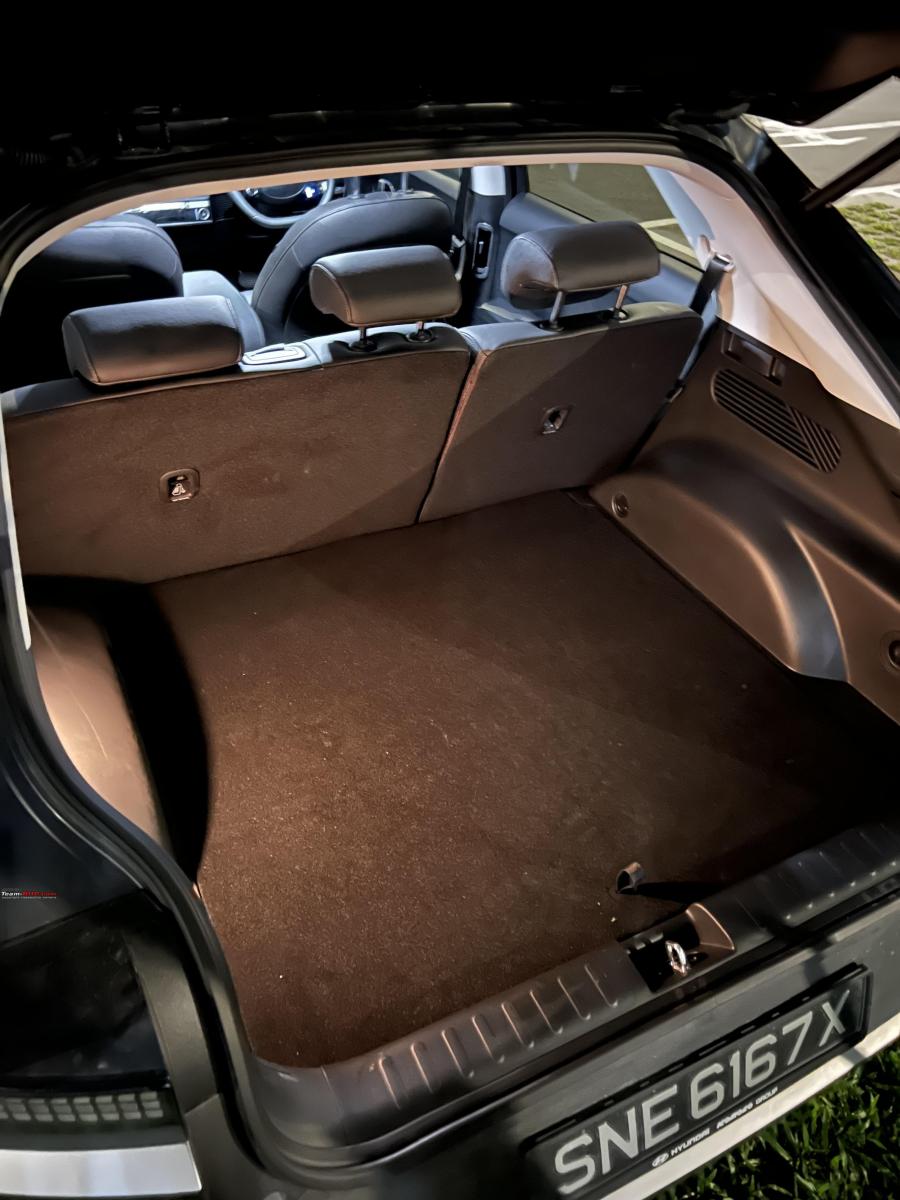
Humongous boot! I was pleasantly surprised. But then again, considering the size and wheelbase of this car, maybe I shouldn't be surprised?
Check out BHPian comments for more insights and information.












.png)










